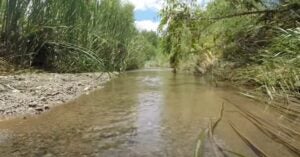The Center for Biological Diversity, a staunchly anti-animal and anti-modern agriculture group, is suing the Biden administration over cattle grazing the Agua Fria National Monument in Arizona.
The lawsuit, filed Tuesday in the U.S. District Court for the District of Arizona, claims that the Bureau of Land Management and U.S. Fish and Wildlife Service violated the Endangered Species Act. The Maricopa Audubon Society also joined the lawsuit.
The Center for Biological Diversity asserts that cattle have caused harm to the riparian areas of the monument, which are crucial habitats for the endangered Gila chub and the threatened yellow-billed cuckoo.
“This lawsuit seeks to jolt federal agencies into finally taking action to stop illegal livestock grazing from trashing endangered species habitat in Agua Fria National Monument,” wrote Chris Bugbee in a news release on the Center for Biological Diversity’s website. “For four years, these agencies have done almost nothing to keep cows out of these protected areas. This isn’t just happening at Agua Fria.”

The center says that field surveys it completed consistently documented illegal livestock damage to designated critical habitats. They claim to have documented damage spanning five different grazing allotments, including contaminated streams, trampled streambeds and banks, and vegetation “grazed down to the roots.” Affected areas include riparian habitats along the Agua Fria River, Ash Creek, Little Ash Creek, Sycamore Creek, Silver Creek, and Indian Creek.
The Agua Fria National Monument, which spans over 71,000 acres, was designated in 2000. It is located just 40 miles north of Phoenix, the ever-growing metropolis.
In 2002, the center sued the BLM for what it claimed was the destruction caused by cattle grazing on the monument. That same year, the center also sued the government over similar claims along the San Pedro River in southern Arizona.
Meanwhile, livestock grazing has occurred on what is now the national monument for over a century. Land managers insist that grazing should be allowed on public lands alongside critical habitats, and in many places, ranching leases pre-date habitat designations.
Leases like the Holbrook family graze their cattle on the Horseshoe allotment, which is managed in cooperation with the Arizona Game and Fish Department.
The introduction of riparian areas, “green zones,” improves the ecological health of rangelands by offering wildlife species water, food, cover, and travel corridors. Riparian areas are also one of the most productive areas on many ranches. In arid areas, cattle distribution challenges often arise, especially when riparian areas offer shade, water, and green grass during hot, dry seasons.
Ultimately, the Center for Biological Diversity has said they hope to exclude cattle from habitats designated as critical. Once critical habitats are established, groups that say their focus is on conservation and suing federal agencies in an attempt to exclude cattle from those habitats.
While the management of public lands for multiple use, it’s no surprise that the center is so quick to jump the gun in situations that involve ranchers. Their website proudly states that “Meat production is a key driver of both the global extinction and climate emergencies.” And they claim that “An ideal food system would provide balanced nutrition through plant-forward, organic, regionally appropriate, minimally processed foods.”
»Related: Ranchers concerned over 245,000-acre New Mexico monument proposal


